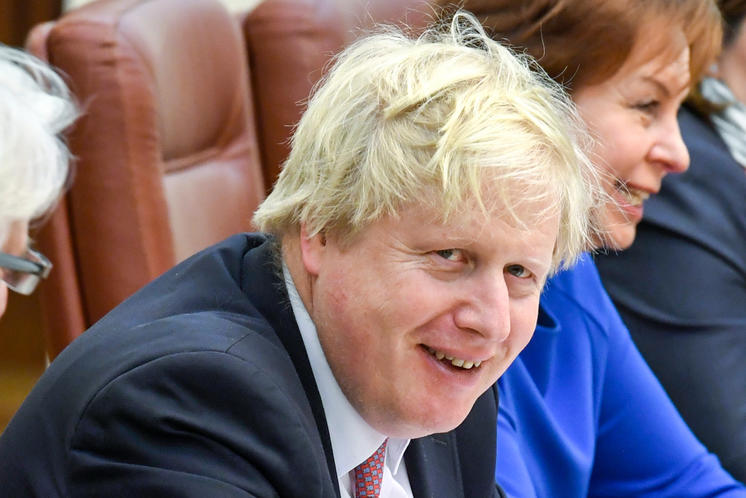Weekly Thoughts by Mirabaud Securities - 18 October 2019



European indices at their highest level of the year, Dow Jones at less than one percent of its historical record or Nikkei at its (high) level of December 2018, most of the world indices were on fire this week. The main reasons were the postponement of US sanctions on 250 billion dollars of Chinese imported goods and glimmers of hope on a soft Brexit. However, the coming days should experience a strong period of volatility. Over the week, the main American indices ended up close to 0.5%. The same positive trend for European indices with an average increase of nearly 0.5%. In Asia, most of the indices were fueled by hope on trade talks between Washington and Beijing with the Nikkei up sharply (+3%).

It is always very difficult to find your way around when the Brexit subject is on the table. However, as the deadline (31 October 2019) approaches, a solution must be found. At the beginning of the week, it was the first time we saw a light at the end of the tunnel when Michel Barnier, French Minister of the Economy and usually very pessimistic, spoke of a "ray of hope" concerning an agreement. That was all it took for the British pound to appreciate sharply against a basket of international currencies. Among the G10 members, the Norwegian krone, the New Zealand dollar and the Yen went lower against the dollar. In emerging markets (still against the dollar), this week we saw the Argentine peso, the Mexican peso and the Polish zloty rise. In terms of declines, we noticed some weakness on the Brazilian real, the Chilean peso and the Colombian peso.

Federal Reserve Chair Jerome H. Powell said Tuesday the central bank will begin buying more Treasury securities “soon" in order to keep the plumbing of the U.S. financial system running smoothly, but said at the National Association of Business Economics meeting in Denver, Colorado that “This was not QE”. The Fed has gradually trimmed its holdings from $4.5 back under $4 trillion as the economy has improved, but that action has shrunk the level of reserves available to banks. As a reminder, President Trump wants the Fed to boost the economy ahead of the 2020 election with lower interest rates and big purchases of Treasury bonds, an action known as “quantitative easing," or QE. Under quantitative easing, the Fed bought bonds to lower long-term borrowing costs and boost stock prices and the economy during and after the financial crisis. Powell argued that the Federal Open Market Committee was not out to spur the economy by resuming growth of its balance sheet, as was the case under its crisis-era buying campaign.

Pork spot prices have soared across China as the African Swine Fever has killed 50% of the country's hog population. The price increase (as 'pig ebola' spreads) has already pushed up consumer inflation to a six-year high. Now analysts are saying that pork prices are expected to move significantly higher through year-end. Beijing said Tuesday that it bought 700,000 tons of US pork and 700,000 tons of US sorghum as goodwill gestures towards the Trump administration for a future trade deal. A trade truce between China and the US could be what China needs to stabilize its pork supplies. Already at record highs, pork prices in China are likely to accelerate through year-end. Rapid food inflation will force the government to intervene in markets to suppress prices. If food inflation gets out of control, it could easily trigger social unrest. Once again, the US has the keys.
The world leader in designing and manufacturing innovative semiconductor materials, Soitec, announced consolidated revenues of 139.0 million Euros for the second quarter of FY’20 (ended September 30th, 2019), up 46.4% compared with 95.0 million Euros in the second quarter of FY’19. This was the result of a 40.0% growth at constant exchange rates and perimeter as well as a positive currency impact of +4.6% and a scope effect of +1.8%. During the quarter the company decided to increase their production capacity for POI products designed for RF filters, following increasing demand from the customers. This is an important step in their strategy to expand their technological footprint beyond their SOI core business. The semiconductor industry rebound in 2020 should fully benefit to Soitec.
Several hot topics were discussed this week, including:
US presidential elections / Qe4 or not Qe4? / Beware of the blackout / Pork war / Tanker rates are currently exploding
Please feel free to ask for more information if interested.
* On the cliff
SWOT stands for Strengths, Weaknesses, Opportunities and Threats, the French equivalent of FFOM analysis (Forces, Faiblesses, Opportunités et Menaces). While SWOT analysis can be used to develop a company's marketing strategy and evaluate the success of a project (by studying data sets such as company's strengths and weaknesses, but also competition or potential markets), I decided several years ago to adapt it as a way to analyse financial markets. SWOT analysis allows a general development of markets by crossing two types of data: internal and external. The internal information taken into account will be the strengths and weaknesses of the market. The external data will focus on threats and opportunities in the vicinity. Finally, and most interestingly, there is a table that will evolve according to current events, which will allow it to reflect the underlying trend in the financial markets on a weekly basis.
This publication is prepared by Mirabaud. It is not intended to be distributed, disseminated, published or used in any jurisdiction where such distribution, dissemination, publication or use would be prohibited. It is not intended for people or entities to whom it would be illegal to send such publication.
Read more
Author
Continue to
